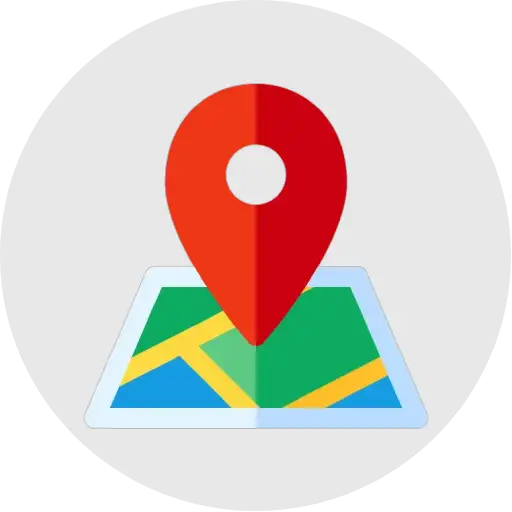By Anuradha Gandhi, Rachita Thakur and Prateek Chandgothia
Introduction
On September 4, 2025, The Nepal Telecommunications Corporation (hereinafter referred to as ‘NTC’) issued a notice to all mobile and internet service providers in Nepal regarding deactivation of twenty six social media platforms including YouTube, Facebook, Instagram, WhatsApp, X and LinkedIn among others for non-compliance with the direction of the Nepal Supreme Court (hereinafter referred to as ‘the Court’) and the Directive of Management of Social Media, 2080 (hereinafter referred to as ‘DMSM, 2080’).[1] This led to widespread violent Gen Z protests across the country resulting in the resignation of the Nepal Prime Minister Mr. KP Sharma Oli on September 9, 2025.[2]
What led to the ban of Social Media Platforms in Nepal?
Introduction of the DMSM, 2080
In 2023, the Government of Nepal introduced DMSM, 2080 as a comprehensive Social Media Guidelines and Directive, aimed at regulating the growing influence and use of social media platforms. This directive outlines key definitions, responsibilities, prohibited actions, and procedural requirements for users, operators, and regulatory bodies involved in the digital ecosystem. Under this directive Entities that intend to operate social media platforms in Nepal must undergo an enlistment process through the Ministry of Communication and Information Technology (hereinafter referred to as ‘MCIT’). The directive penalizes the non-enlisted entities with a blanket ban.
Suo Moto Contempt Proceeding
On April 26, 2024, a digital media house in Nepal, published text as well as audio clips claiming that the chairpersons of two leading media houses met with incumbent and former Supreme Court justices as well as senior advocates to ‘dismiss’ over 400 corruption cases in the court. The report had claimed that an April 21, 2021 court verdict was part of the deal. This report was also published its YouTube channel.
Thereafter on April 28, 2024, the Court initiated Suo moto contempt proceedings against the media house for the report. The full text of the judgement in the ‘Contempt Proceeding no. 080-CF-0012’ dated September 9, 2024 was issued on August 16, 2025.[3] The publication of the contemptuous content on YouTube led the Court to observe that – “Online and social media platforms of domestic or foreign origin should be mandatorily registered with the competent authority before operation, and mechanisms should be in place to evaluate and monitor undesirable content.” This observation was made on the basis of the DMSM, 2080 which was enacted in 2023.[4]
Notice for Compliance with DMSM and Court’s Directions
After the judgment, on August 28, 2025, the MCIT issued a notice directing all social media platforms currently operating in Nepal that had not been registered, to mandatorily register with the MCIT within seven days, i.e., September 3, 2025. Furthermore, the notice directed each such platform to designate a Point of Contact, a Resident Grievance Handling Officer, and an Officer responsible for monitoring compliance with self-regulation within Nepal. [5] This was issued under the DMSM and the Court’s judgement.
NTC issued notice banning Social Media Apps
The NTC vide notice dated September 4, 2025, issued direction to all the mobile and internet service providers to block access to a total of twenty six social media applications on the grounds of failure to comply with the seven-day deadline fixed by the MCIT Notice. The Government’s stance states that the twenty six social media platforms failed to comply with the DMSM, 2080 and the Court’s directions even after multiple requests, while the other side of the argument states that DMSM, 2080 threatens the freedom of expression and press freedom.[6]
The Social Media Act (Bill), 2081 due for Approval
The Social Media Act (Bill), 2081[7] (hereinafter referred to as ‘SMA’) was registered at Nepal’s National Assembly on January 28, 2025, by the communication minister Mr. Prithvi Subba Gurung. However, the same awaits approval from the Assembly.[8] SMA’s provisions cement the provisions of the DMSM, as it mandates that social media platforms register with the government to operate in the country. It requires all social media platforms operating in Nepal to secure a license, and it allows the government to deny applications if it deems a platform harmful to the nation’s peace, security, sovereignty, or national interest.[9]
Comparison of the SMA and India’s Intermediary Guidelines
India’s Information Technology (Intermediary Guidelines and Digital Media Ethics Code) Rules[10], 2021 and Nepal’s SMA, both regulate Social media in their respective countries. However, the specific aspect of the SMA which indicates the possibility of violation of the Citizen’s freedom of expression is the licensing mechanism which mandates all social media platform to obtain license to operate in Nepal. It also gives the Government of Nepal, the discretion to refuse or revoke the license on broad and subjective grounds like security, sovereignty, territorial integrity, national security, national unity, independence, dignity, or operations deemed to be contrary to national interests.
UNESCO published a detailed analysis of the SMA on March 17, 2025 flagging concerns stating that States shall neither impose a general monitoring obligation for digital platforms to identify or take proactive measures in relation to illegal content, nor hold platforms liable for the content transmitted except in cases of direct editorial participation or actual knowledge of the existence of an illegality. In contrast, the Indian Intermediary guidelines obligate social media platforms to make efforts which are reasonable and practicable to prevent such unlawful content from being published. Further unlike India, SMA does not provide for any safe harbor provision granting immunity to the social media platform from liability when there is no knowledge of unlawful content published on their platforms.[11]
The Aftermath of the Social Media Ban
In the aftermath of the ban, Nepal is witnessing one of the worst unrests in its recent past. The protest is led by people in the age group of 13 to 18 years. On September 8, 2025, the protests turned violent as the protestors clashed with the police personnel. As per reports, approximately 20 people lost their lives and around 400 were hospitalized as consequence of these clashes. This resulted in a string of resignations by officials due to the response of the Government towards the protests include the Home minister.[12] Subsequently on September 9, 2025, the Nepal Prime Minister Oli gave his resignation after the Nepal’s biggest selling newspaper and the Nepal Army Chief called for his resignation.[13] Now, the government has restored the operations of the banned social media platforms.
[1] https://www.medianama.com/wp-content/uploads/2025/09/Nepal-Social-Media-Platform-ban.jpeg
[2] https://www.news18.com/world/nepal-pm-kp-sharma-oli-resigns-amid-protests-in-country-9559445.html
[3] https://supremecourt.gov.np/web/assets/downloads/080-CF-0012.pdf
[5] https://giwmscdntwo.gov.np/media/pdf_upload/123_z1yiuqb.pdf
[7] https://www.medianama.com/wp-content/uploads/2025/09/Nepal.Social-Media-Bill_2025_Eng-1.pdf
[8] https://www.jurist.org/news/2025/09/nepal-blocks-26-social-media-platforms-in-historic-crackdown/
[9] https://www.medianama.com/2025/09/223-nepal-banned-26-social-media-platforms/
[12] https://edition.cnn.com/2025/09/09/asia/nepal-protests-social-media-ban-explainer-intl-hnk


